

The outside diameter of the frame end, the tenon, is 20/32 inch but the
inside diameter of the ferrule is 24/32 inch. In addition,
the casting of this tenon does not have a sharp, 90 degrees
angle to the edge of the frame and existing
slope prevents a ferrule to fit snugly.
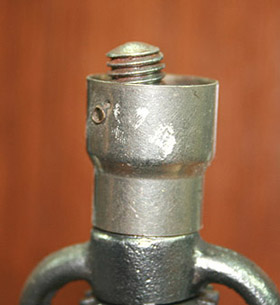
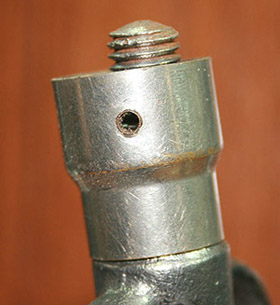
Consequently, the ferrule is a free-floating part that does not
serve its purpose. I believe
these parts should fit tight to each other and do not leave any
wiggle room. However, it is not the case on drills I have
examined. This creates overall pressures
distribution problem during the drill use.
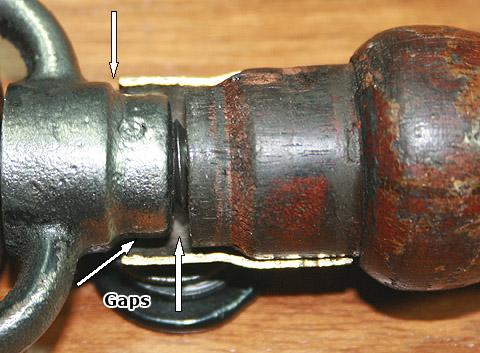
Here is a cut-out of the assembly. As you can see,
the work of controlling the drill is performed only by the
wooden handle attached to the threaded rod, without any support
from the ferrule or surfaces of the tenon and wood of the handle
touching together. In correct design and execution these gaps would be eliminated and provide
for much better distribution of pressure on wooden handle.
The model released in 1903 does not have these problems.
When the handle is installed it does not have any gaps in the
spaces described previously.

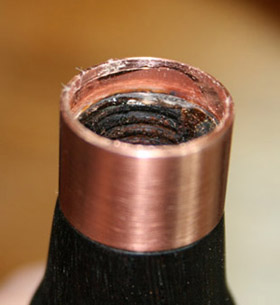
First, the tenon is machined to precise
diameter. The handle ferrule will fit tightly on this
tenon and surface of the wood will touch the surface of the
tenon. This is a winning combination. I have never
seen 1903 release with cracked handle.
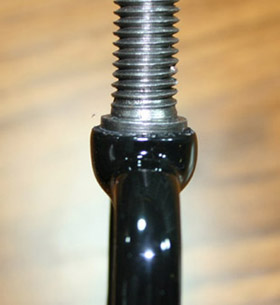
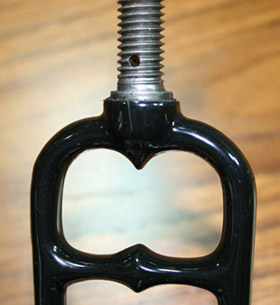
The shape to remember... It is slim and nice design.
It will change in a few years to accommodate different approach
to the handle rod - it will be separate machined screw,
installed in larger housing with an inside thread.